
Guests
- Julie Cohenproducer and director of New York Goes to War.
- Sam Toperoffproducer and director of New York War Stories.
The new PBS documentary “The War” sparked controversy because it originally excluded the voices of any Latino or Native American veterans. Under pressure, director Ken Burns agreed to add 28 minutes of footage including interviews with two Latino veterans and one Native American. We speak to the filmmakers of two companion documentaries highlighting Latino and African-American voices: Julie Cohen of “New York Goes to War” and Sam Toperoff of “New York War Stories.” [includes rush transcript]
Transcript
AMY GOODMAN: We turn to some World War documentaries that are airing, beginning tonight, airing one of the most anticipated and controversial documentaries of the year. We’re going to be looking at documentaries that are not Ken Burns’s The War, but that are companion documentaries that are being done in New York and around the country.
Ken Burns’s documentary, The War, has gotten a lot of attention. It’s a seven-part series that tells the story of the Second World War and the accounts of a handful of men and women in American towns. The documentary sparked controversy because it originally excluded the voices of any Latino or Native American veterans. Under pressure, Burns agreed to add 28 minutes of footage, including interviews with two Latino veterans and one Native American.
JUAN GONZALEZ: Meanwhile, local PBS stations have produced companion documentaries to air alongside The War. Here in New York, WLIW produced New York Goes to War and New York War Stories. Julie Cohen, the producer and director of New York Goes to War, joins us here at the firehouse, along with Sam Toperoff, producer and director of New York War Stories. But first, we begin with a clip from New York Goes to War, featuring Manny and Gloria Medina.
NARRATOR: For Gloria, those years just before the U.S. entered the war had a special sparkle. She’d become a neighborhood celebrity, a star on the local beauty pageant circuit.
GLORIA MEDINA: They picked me out to be Miss Puerto Rico. You got to go onto the stage, and you’re with a dress or an evening dress and everything, girls and everything.
MANNY MEDINA: Like they have a Miss America now or Miss Teenager. That’s what she did.
GLORIA MEDINA: That’s the same thing.
NARRATOR: Manny and Gloria first met in junior high: PS 6 on Smith Street. He was on hall patrol.
GLORIA MEDINA: He used to be a monitor, and he was kind of, you know, tough. “Oh, no. You gotta go this way and you gotta go that way.” I says, “Well, OK, fine.” And I hated his guts.
MANNY MEDINA: I’m the type of a guy that I have always liked to give orders. I don’t like to take orders.
NARRATOR: That same quality would lead Manny to enlist in the Army at age 18 in 1939. With dreams of leading a platoon, he signed up with the 69th Infantry Regiment of the New York National Guard.
MANNY MEDINA: The 69th is a respected, well-respected Army unit. And it has many battle stars, many, many. They have participated, I think, in almost every war, and we have survived. The Fighting Irish, that’s the name. The Fighting Irish.
NARRATOR: The 69th, once all-Irish-American, was starting to open up. Manny didn’t mind being addressed in a brogue.
MANNY MEDINA: “Sergeant Medina, how would you be feeling today?” I must have been the number one outsider that was not Irish. There was never any pointing of fingers, “You are Puerto Rican,” or you’re this or you’re that. There was no such bird.
NARRATOR: Manny was confident he could earn his stripes alongside guys with names like Murphy and O’Brien. And he was right.
MANNY MEDINA: The first month that I entered the Army in Fort McClellan, Alabama, I was made a corporal. I was a non-commissioned officer. After that, I went up the ranks until I became top sergeant. In those days in the Army, a sergeant was king of the hill. When he spoke, you moved.
AMY GOODMAN: That was an excerpt of the documentary New York Goes to War. Julie Cohen in our studio. Tell us about this film, Julie.
JULIE COHEN: Basically, the documentary takes a group of — a small group of New Yorkers and just follows their stories all the way through, from before the war started and their recollections of prewar New York all the way through to V-J Day and a little bit beyond. The man you just saw, Manny Medina, alongside the wife you probably guessed did not continue to hate his guts and in fact ended up falling in love and marrying him, went on from those early days in the military to have an extremely distinguished career, won a Silver Star for his heroism on Saipan and was later — he served for three years in the Pacific. And he was ultimately shot in Okinawa in the leg, told he would never walk again, but went on to walk down the aisle in marrying Gloria.
AMY GOODMAN: He had seven brothers?
JULIE COHEN: Yes. He had — well, he was one of seven. In fact, there were actually a couple other brothers who were not in military service, but there were seven Medina brothers who all served in World War II in the Army or the Navy. And he has, actually, an extraordinary picture of the seven of them all together in their uniforms. He was born in Puerto Rico and had moved to Brooklyn at age nine. Gloria was a Puerto Rican born and raised in Brooklyn.
JUAN GONZALEZ: How many of these local sort of city-oriented films on the war are being produced around the country?
JULIE COHEN: There are many. I don’t know the exact number. But my understanding is that most PBS stations are doing their own local versions in connection. I think they vary. I think they vary greatly. Even in New York, there are actually two local ones: mine and Sam’s. And those two vary quite greatly. And so, there’s dozens, at least.
AMY GOODMAN: Juan, you’ve been covering the national controversy, which is separate from the documentaries that Julie and Sam have done.
JUAN GONZALEZ: Yes. Actually, I got an update recently last week on what’s going on with the Ken Burns film, and apparently, I mean, there have been some changes that Burns has made to his original film, but there is a lot of dissatisfaction still among Latino war veterans and some of the community leaders over, one, the fact that there’s a companion book that has already been published that is part of the whole Ken Burns enterprise that has no mention of any Latinos or Native Americans that are involved, that Burns, himself, has dealt with this as an unfortunate political correctness issue, rather than a huge error on his part, in terms of conceptualizing and developing the film.
And there’s an enormous marketing campaign. Anheuser-Busch is spending $10 million to put, I think, War logos on all of its beer cans in promotion of the Ken Burns documentary.
And I think the feeling of the educators and the community leaders is that the major film, not the local ones that are actually — some of them are actually very good, from what I’ve heard, but the major film will end up becoming a major piece of educational material in public schools and libraries. So now a campaign is going to be waged around the country to debate in every school district and every local library whether this should be used — the major film — should be used as an educational campaign, especially the book, because the book is totally exclusionary, the accompanying book that’s part of the film. So it should be interesting to see how it develops over the next few years.
AMY GOODMAN: Well, let’s go back to another clip of Julie Cohen’s documentary, New York Goes to War, which features the story of Bill McBurney. He grew up in Harlem and was a member of the first African-American tank battalion to see combat.
NARRATOR: For Bill McBurney, Army life got less friendly as he traveled farther and farther from New York City, first to Fort Knox, Kentucky, then to Camp Claiborne, Louisiana.
BILL McBURNEY: That’s when I got the shock of my life about being in the South.
NARRATOR: At Camp Claiborne, black troops didn’t sleep in barracks like the white soldiers, but in tents on an open field. In town, things were worse.
BILL McBURNEY: They had signs up: “Colored” and “White.” And I was really shocked at that, because I hadn’t seen that before. And a water fountain for colored and a water fountain for white. And I wondered what the hell’s the difference between one water and another water.
NARRATOR: After long days training in hot tanks, the guys from up north expected they’d get a little respect.
BILL McBURNEY: We figured we were from New York, we were Army, and we were getting ready to fight for the country, and they should, you know, treat us different. But we were — a lot of the Southern fellas told us, “Uh-uh, there’s no difference. You’re black. You gotta go follow, you know, the signs. Don’t try to go in the front door. Go around the back door.” Even today, it bothers me, you know, that we were there so-called to fight and how we were treated down there in the South.
NARRATOR: The worst treatment, Bill says, came from the white soldiers.
BILL McBURNEY: You know, people calling out your name , and I got in a couple of scrapes, because I was quick to — I didn’t mind swinging at you, because I was raised, you know — where I come from, we fought in a minute.
NARRATOR: After a few months training in Louisiana, Bill’s unit was moved to Fort Hood, Texas, known then as Camp Hood. That’s where he met a newcomer to the 761st who made quite an impression. He had excelled at almost every sport at UCLA, and he was an officer. The second lieutenant’s name was Jackie Robinson.
BILL McBURNEY: I used to play scrimmage football with him. He tackled me. I mean, he knocked all the wind out of me. But he was a nice fellow, hell of a nice guy.
NARRATOR: Not long after he arrived in Fort Hood, Lieutenant Robinson was riding an Army bus, when the driver asked him to move to the back. He refused. Military police investigating the incident addressed him with a racial slur. He talked back.
JACKIE ROBINSON: If you ever call me a n—-er again, I’ll break you in two.
NARRATOR: Robinson was arrested and court-martialed for insubordination. He took the stand in his own defense.
JACKIE ROBINSON: I did not like to be called a n—-er. I’m a Negro, but not a n—-er. My grandmother gave me a good definition. She was a slave, and she said the definition of the word was a low, uncouth person. But I don’t consider that I am low and uncouth. The captain did not seem to recognize me as an officer at all, but I did consider myself an officer and felt that I should be addressed as one.
NARRATOR: Robinson was acquitted and left the Army with an honorable discharge. The white colonel of the 761st, who had vehemently opposed the court-martial, told Robinson the whole farce should never have happened.
JACKIE ROBINSON: One of these days, sir, it won’t happen.
BILL McBURNEY: The idea, the whole idea, is disgusting.
NARRATOR: Bill McBurney was starting to think he should have never left Harlem.
BILL McBURNEY: I wish I hadn’t joined the Army and stayed where the hell I was, you know, at home. But once you in there, you go along with the story.
AMY GOODMAN: An excerpt of New York Goes to War. The documentary New York War Stories also deals with racism in the Armed Services.
NARRATOR: If there were guys transferring over from Europe who had seen too much war, other guys complained they hadn’t yet seen enough.
CLARENCE BEAVERS: We called ourselves “Triple Nickels,” and the insignia was a parachute, and on top of the parachute was a black panther coming across the top of the parachute, and then “555.”
General [inaudible], he definitely wanted us to go into combat.
They went to Eisenhower; he said, “Thanks, but no thanks.” They went to Bradley; he said, “Thanks, but no thanks.” They went to the various Army commanders and field commanders; they said, “Thanks, but no thanks.” So that meant no thanks.
JOHN I. MULZAC: At least a third of the Tuskegee Airmen were flying B-25 bombers. There were three squadrons in the 477 fighter group. Three, six, nine, 12 — we could put up 24 airplanes, B-25s, all blacks. We were getting ready to go to the Pacific.
NARRATOR: Again, the Air Force response was a polite “no thanks,” even though the Pacific offensive would require intense combat on land, at sea, in the air.
AMY GOODMAN: An excerpt of New York War Stories. Sam Toperoff, in 10 seconds, how did it feel to make this?
SAM TOPEROFF: OK. Well, Ken Burns’s oversight gave me a wonderful opportunity. I was eight when the war started, 12 when it ended. And I thought the war was a golden time for me. Now I know what the true war was.
AMY GOODMAN: Sam Toperoff, Julie Cohen, thanks so much for joining us.

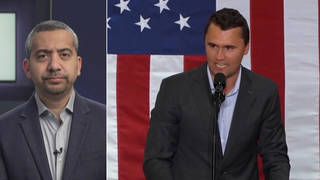

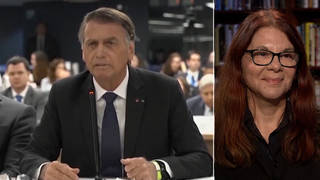
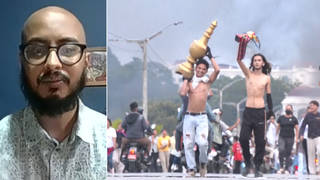
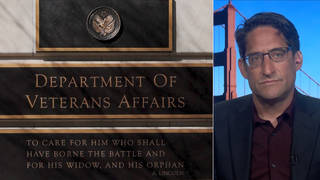
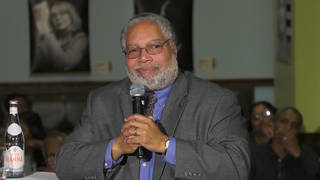

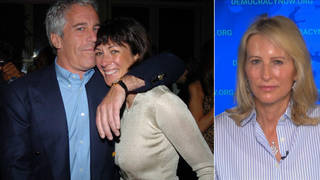

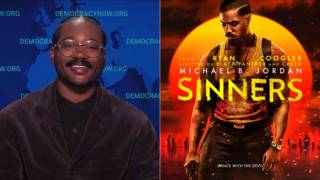

Media Options